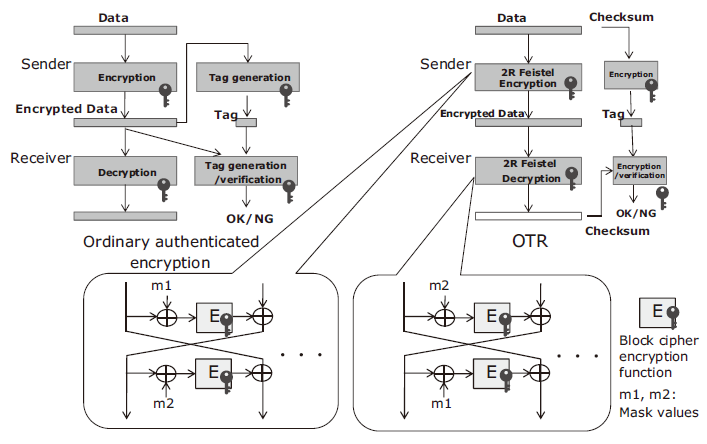The modern era is witnessing an unprecedented proliferation of Internet of Things (IoT) devices, a phenomenon that fundamentally alters how information is utilized and transmitted. However, this rapid integration of smart devices into our daily lives introduces significant challenges, especially in the realm of security. Among the myriad of solutions emerging to fortify the digital landscape, lightweight cryptography plays a critical role in securing IoT and constrained devices. This article delves into the intricate relationship between lightweight cryptography, IoT devices, and the broader implications for security across various applications.
Understanding Lightweight Cryptography
Lightweight cryptography refers to cryptographic algorithms specifically designed to operate with limited computational resources. These algorithms are particularly tailored for devices with constraints in processing power, memory, and energy supply. Traditional cryptographic methods, while robust, often require substantial computational overhead that can be prohibitive for many embedded systems prevalent in the IoT ecosystem.
The necessity for lightweight solutions stems from the distinct characteristics of IoT devices. Many of these devices operate on small microcontrollers and often run on batteries, requiring efficient resource management to prolong operational lifespan. Thus, lightweight cryptography aims to strike a balance between security and performance, ensuring that devices remain protected while able to perform their intended functions.
The Role of Lightweight Cryptography in IoT Security
To understand the significance of lightweight cryptography, it is essential to recognize the vulnerabilities inherent in IoT devices. Most IoT devices connect to the internet, thereby exposing themselves to various security threats, including unauthorized access, data interception, and misuse of the devices themselves. Lightweight cryptography plays a crucial role in addressing these vulnerabilities through encryption, authentication, and secure key management.
Encryption Mechanisms
At the heart of lightweight cryptography lies encryption, which secures data by rendering it unintelligible to unauthorized users. Two primary forms of encryption are symmetric and asymmetric encryption. Symmetric encryption, where the same key encrypts and decrypts data, is typically faster and more resource-efficient, making it a favorable choice for resource-constrained devices.
Specific lightweight symmetric encryption algorithms, such as AES (Advanced Encryption Standard) in reduced variants or the PRESENT cipher, epitomize the objectives of lightweight cryptography. These algorithms maintain security while minimizing computational requirements, thus providing a robust defense mechanism without overwhelming the device’s limited resources.
Authentication Protocols
Authentication is indispensable for establishing the legitimacy of devices within an IoT network. Lightweight cryptography facilitates authentication through various protocols, such as message authentication codes (MACs) and digital signatures. MACs ensure data integrity by allowing devices to verify the authenticity of the information received. Digital signatures, while computationally intensive in their conventional forms, have seen lightweight adaptations that enable their use even on devices with stringent resource constraints.
Protocols like the Elliptic Curve Digital Signature Algorithm (ECDSA) demonstrate reduced computational complexity while maintaining a high level of security, thus supporting secure communication without undue burden on resources. These lightweight authentication methods are not just supplementary; they are foundational in establishing trust between devices in an increasingly interconnected environment.
Secure Key Management
One of the critical aspects of cryptographic systems involves the secure management of keys. In resource-constrained environments, secure key generation, storage, and distribution must be efficient and resilient. Lightweight cryptographic schemes often incorporate innovative approaches, such as key derivation functions that generate strong keys from limited inputs, thus conserving valuable resources while maintaining security integrity.
The deployment of ephemeral keys—temporary keys used for a single session—further enhances security. As these keys are discarded after use, there remains a reduced risk of key leakage, which is paramount in dynamic IoT networks where device communication frequently changes. The combination of these methods leads to a more resilient infrastructure, capable of resisting common threats like eavesdropping and replay attacks.
Applications Across Industries
The implications of lightweight cryptography stretch across a multitude of industries, given the ubiquity of IoT devices. In healthcare, for instance, wearable health monitors utilize lightweight cryptographic algorithms to secure sensitive patient data, thereby ensuring privacy and compliance with regulatory standards. Similarly, in smart home environments, lightweight cryptography protects the communication between devices, such as door locks, cameras, and sensors, boasting enhanced security for homeowners.
In the industrial sector, manufacturing equipment typically employs lightweight cryptography to secure communication within the industrial IoT (IIoT) frameworks, preventing unauthorized access that could result in operational disruptions or data breaches. Thus, the integration of lightweight cryptography supports not only the devices’ integrity but also aids in maintaining systemic resilience against emerging threats.
Challenges and Future Considerations
Despite the apparent advantages, implementing lightweight cryptography is not without its challenges. The delicate balance between achieving adequate security levels while conforming to limited device capabilities presents ongoing design dilemmas. Moreover, as adversaries become increasingly sophisticated, the cryptographic mechanisms must evolve to counteract new forms of attacks effectively.
Future research must focus on developing more advanced lightweight cryptographic techniques that can adapt to the dynamic landscape of IoT threats. This may include exploring post-quantum cryptography, which offers potential resilience against quantum-based attacks, as well as ongoing improvements in algorithmic efficiency while ensuring compliance with global security standards.
In conclusion, lightweight cryptography significantly enhances the security of IoT and constrained devices. By focusing on minimizing resource consumption while ensuring robust protection, it presents a favorable solution for the security challenges faced in the modern landscape. As the adoption of IoT continues to expand, the role of lightweight cryptography will become increasingly crucial in safeguarding our interconnected world.








Leave a Comment